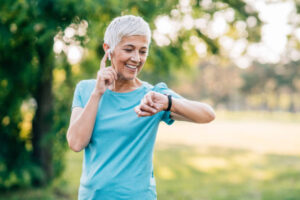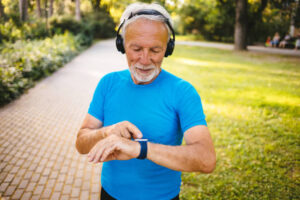
As people age, it can become increasingly difficult for them to live independently. Many seniors have health conditions that require close monitoring and timely intervention, and they may also struggle with mobility or other physical limitations.
However, with the arrival of senior remote monitoring technology, it is now possible for seniors to receive high-quality care from the comfort of their own homes. In this blog, we will explore the benefits of senior remote monitoring, how it works, and what to consider when choosing a monitoring system.
Let us take a deep dive step by step!
The Benefits Of Senior Remote Monitoring
Improved Quality of Life
By using remote monitoring technology, seniors can remain in their homes, maintaining a sense of independence and freedom.
Timely Intervention
With remote monitoring, caregivers can detect changes in a senior’s health status in real-time, enabling them to intervene quickly and prevent complications.
Reduced Healthcare Costs
Remote monitoring can reduce the need for hospitalizations, emergency room visits, and other costly interventions.
Increased Caregiver Support
Senior remote monitoring systems can provide caregivers with the support and information they need to provide high-quality care.
Working of Senior Remote Monitoring
Senior remote monitoring works by using a variety of sensors and devices to monitor a senior’s health status. These devices may include:
Wearable devices: These devices can monitor a senior’s heart rate, blood pressure, and other vital signs. All Well is the best smart watch solution with 4G or Bluetooth features. The exciting part is that it is available in bracelet form as well. So, you need not to worry about elderly people in your home.
Smart home devices: These devices can monitor a senior’s activity level, detecting falls or other unusual activity.
Medication dispensers: These devices can remind seniors to take their medication at the right time and ensure they are taking the correct dosage.
Video monitoring: Video monitoring can be used to check on a senior’s wellbeing and ensure they are safe.
These devices transmit data to a remote monitoring center, where healthcare professionals can review the data and take appropriate action if necessary. Caregivers can also access the data, allowing them to monitor a senior’s health status and provide timely intervention if needed.

How To Choose The Best Senior Remote Monitoring System?
When choosing a senior remote monitoring system, there are several factors to consider:
Cost: Remote monitoring systems can vary widely in cost, so it’s important to choose a system that fits within your budget.
Ease of Use: The system should be easy to use for both seniors and caregivers.
Customizability: The system should be customizable to meet the unique needs of each senior.
Compatibility: The system should be compatible with a range of devices and sensors, ensuring that it can provide comprehensive monitoring.
Conclusion:
Senior remote monitoring is a game-changer for seniors who want to age in place. By using remote monitoring technology, seniors can receive high-quality care from the comfort of their own homes, while caregivers can rest assured that their loved ones are safe and healthy. When choosing a senior remote monitoring system, it is important to consider the cost, ease of use, customizability, and compatibility of the system.
